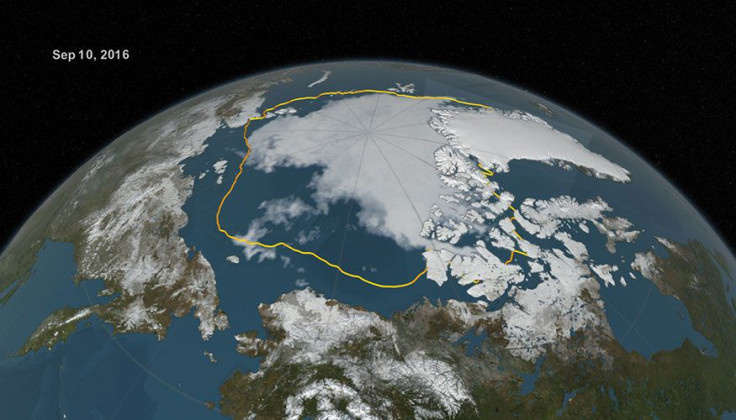California Wildfires Will Get Worse As Arctic Sea Ice Melts, Scientists Say

The wildfires raging in California this week could be just a preview of what’s to come, as scientists are warning that melting sea ice in the Arctic will make that U.S. state even drier, a condition that promotes this kind of blaze.
That will happen in as little as a few decades, according to the Lawrence Livermore National Laboratory.
“The dramatic loss of Arctic sea ice cover observed over the satellite era is expected to continue throughout the 21st century,” the lab said. “Over the next few decades, the Arctic Ocean is projected to become ice-free during the summer.”
Arctic sea ice has an effect on climate and weather beyond just the northern cap of the planet, and the scientists say that one consequence will likely be less precipitation in California. That has to do with the changes to the movement and temperature of air, called convection, in the tropical parts of the Pacific Ocean. The tropical climate will, in turn, affect the more northern environments.
In California, reduced precipitation from winter storms could decrease, according to a study in Nature Communications, potentially drying it out.
The scientists are projecting an overall decrease in rainfall to hit the most populous state, although they warn that this is an average; there will be some wetter years and some drier ones.
“The recent California drought appears to be a good illustration of what the sea-ice driven precipitation decline could look like,” researcher Ivana Cvijanovic said in the lab’s statement about the drought between 2012 and 2016, although the study did not specifically link it to the changing Arctic ice landscape.
Higher temperatures play a role as well in a drought, because what little rainfall may appear evaporates from the land.
“Pronounced Arctic sea-ice loss … is likely human-induced, arising from anthropogenic warming caused by greenhouse gas increases,” according to the research. “Our study thus identifies yet another pathway by which human activities could affect the occurrence of future droughts over California — through human-induced Arctic sea-ice decline.”
The new research was published as California is once again contending with dangerous wildfires. According to reports, the flames in Southern California were being spread and fueled by strong Santa Ana winds. Some of the places hit included Sylmar, in Los Angeles’ San Fernando Valley area, and Ventura County. For a few weeks in October, Northern California was hit with devastating, far-reaching wildfires in the Napa, Sonoma, Mendocino and Nevada counties.
During dry periods, a small spark is all that is needed to light up dried out vegetation and cause a huge wildfire, and high winds spread the blaze and make it difficult to get under control for firefighters. The small spark that lights everything up could be from a lightning strike, an ember from a campfire or a cigarette butt, a tree blown into an electric line, or a vehicle dragging a chain on the highway.
“The loss of Arctic sea ice cover is not only a problem for remote Arctic communities, but could affect millions of people worldwide,” Cvijanovic said.
© Copyright IBTimes 2024. All rights reserved.











